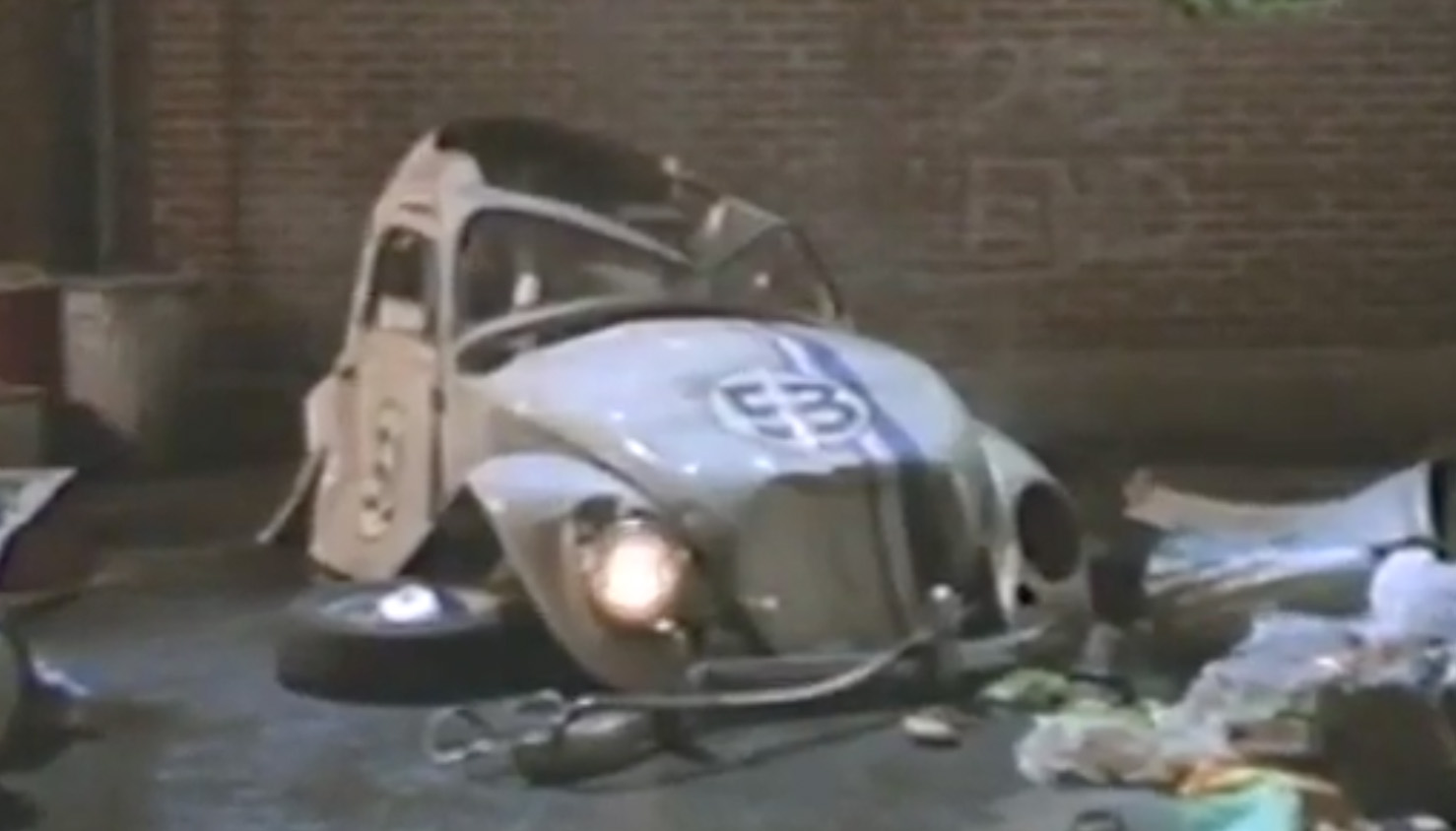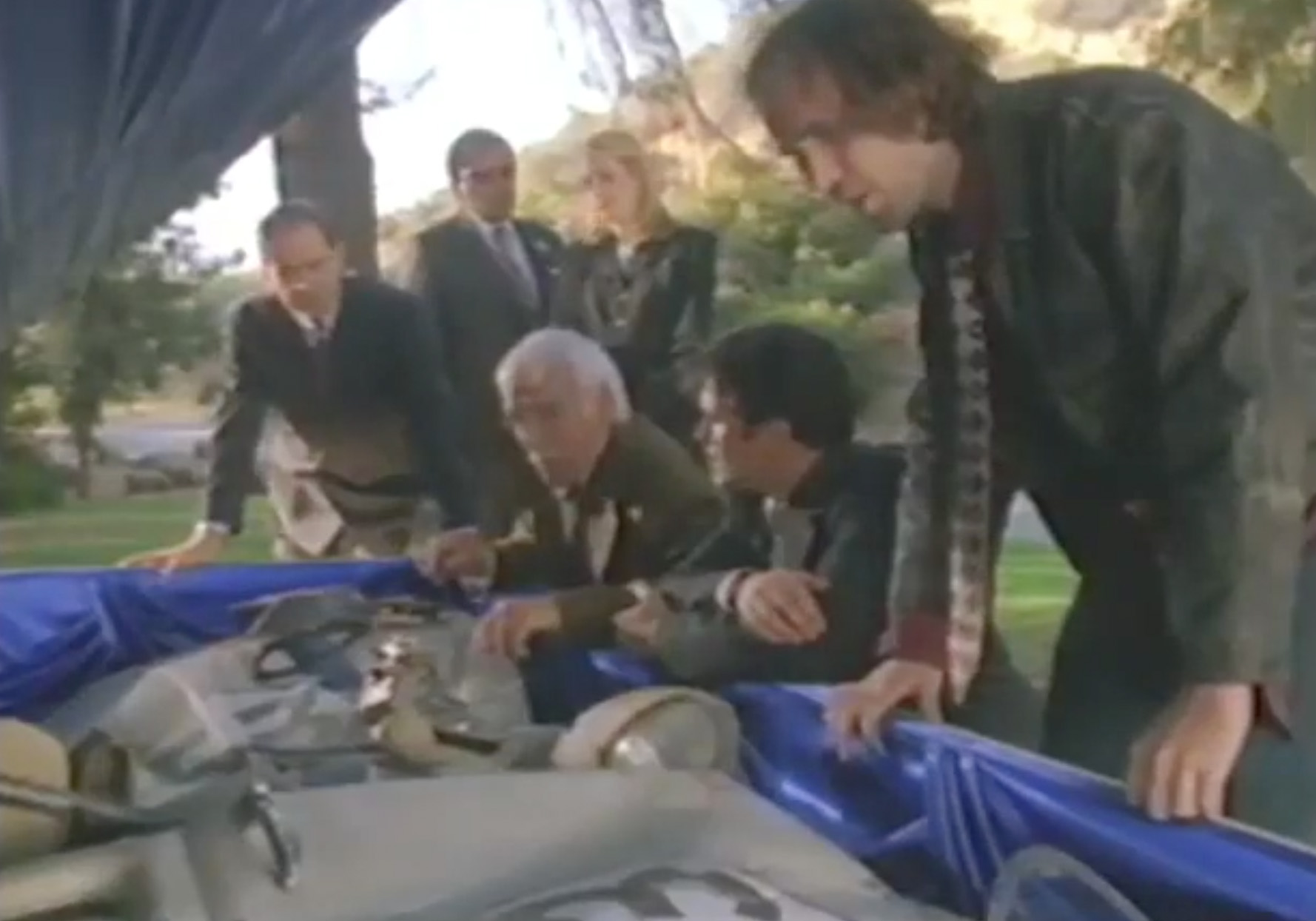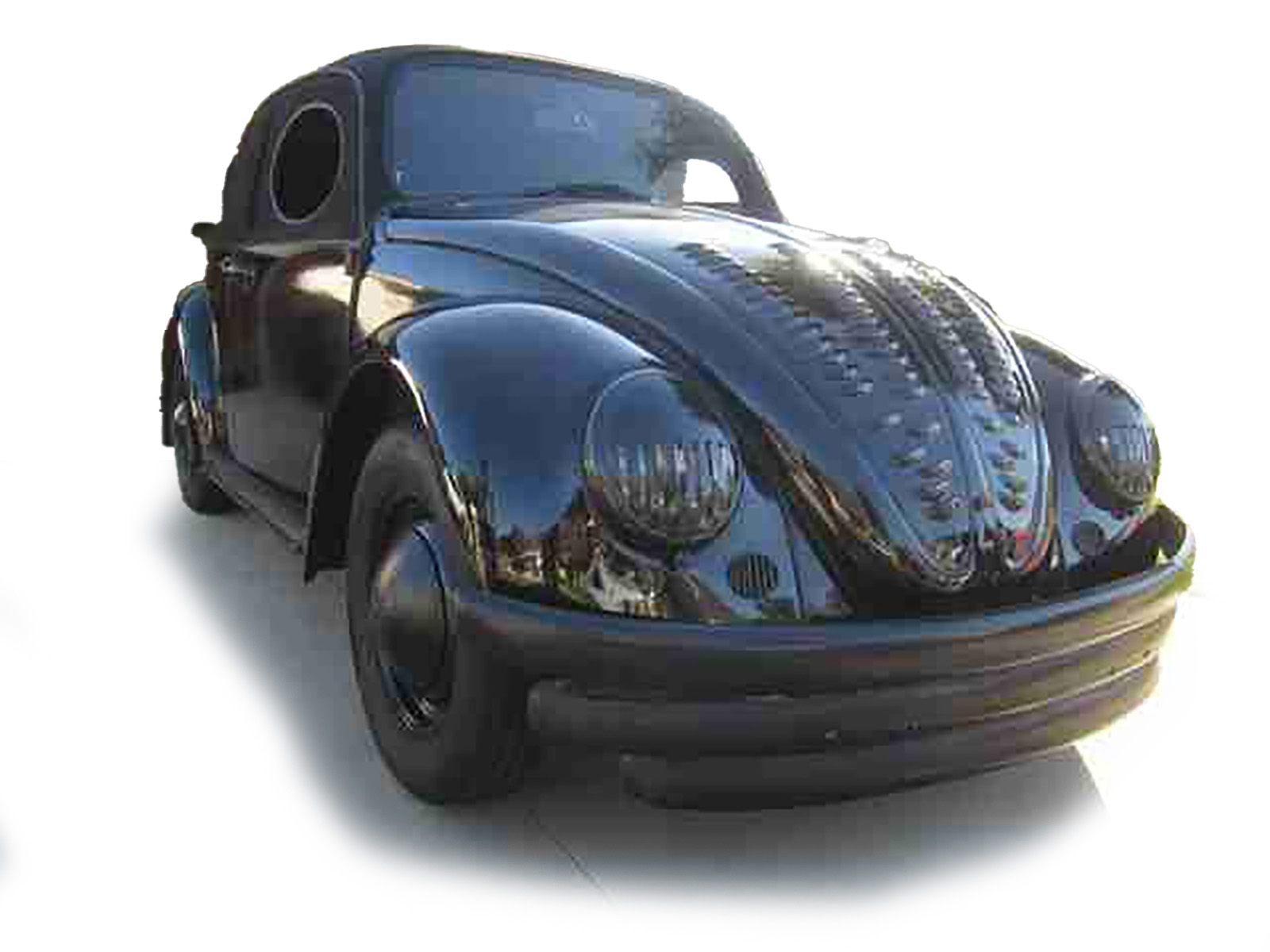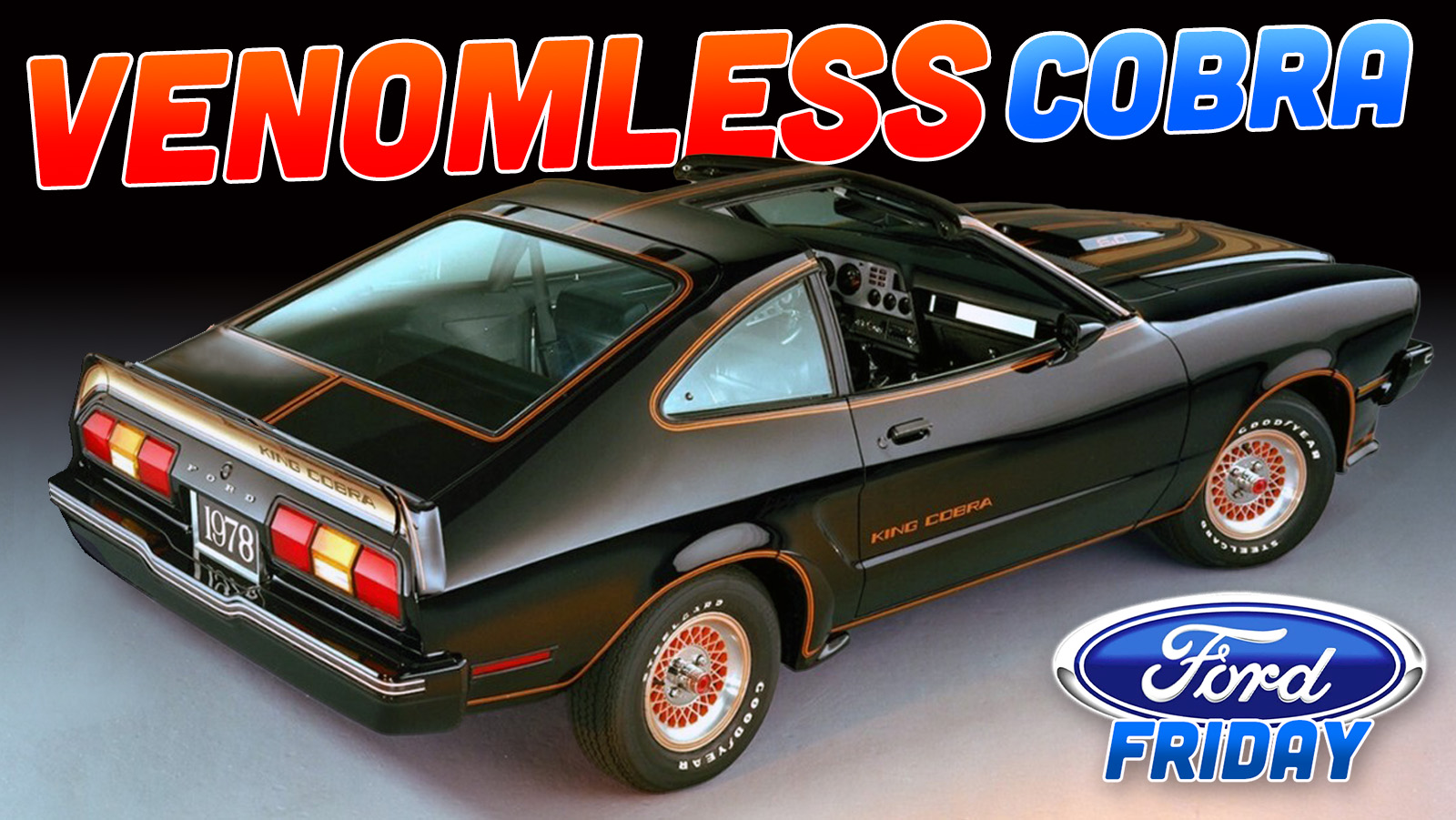When we decided we’re doing just black cars today for Black Friday, there was one black car that popped into my mind, unbidden but inevitable. I thought of it because it’s not just black chromatically, but black conceptually, in the non-color sense of dark, sinister, evil. It’s a diametrically-opposed counterpart to a famous automotive cultural icon, Herbie the Love Bug. It’s a sentient car named Herbie the Hate Bug, but don’t be too alarmed: it’s not just fictional, but it’s kind of poorly written fiction.
Yes, Horace the Hate Bug! This 1965 Beetle was built to be the antagonist in Disney’s 1997 reboot of The Love Bug, in a made-for-TV movie called, again, The Love Bug. This reboot starred Bruce Campbell (yes, of Evil Dead fame) and was directed by Peyton Reed, the fellow North Carolinian who went on to direct the Ant-Man movies. The man seems to have a thing for movies that reference insects in their titles.
While I am generally happy to see any additon to the Greater Love Bug Cinematic Universe, I tend to think this 1997 movie sort of debased what made the original movie great, and that’s mostly because this movie committed a pretty grave sin of story telling: telling too much story.
It was sort of imperative to the plot to do so, I guess. The too much story that was told has to do with the origin of Herbie, a sentient car. It gives Herbie’s origin an explanation that, I feel, kind of ruins things. Not everything needs a blatant explanation. I think you’ll see what I mean: In the 1997 film, Herbie’s origin is explained by re-casting Herbie as a postwar project by a German scientist named Dr. Gustav Stumpfel, who, in the process of building a car, accidentally drops a photograph of his wife into a vat of molten metal, which somehow transfers all of the loving feelings Stumpfel has for his wife into the car itself, making it sentient and motivated by love.

It’s a pretty inane backstory, even if you overlook the absurdity of a lone person attempting to build a car by starting with a vat of molten metal, but, here, you can watch how it’s shown in the movie here:
The silly story is sort of crucial to the plot, because it explains how the same Dr.Stumpfel is able to be coerced into making another sentient car, but this one ends up imbued with evil and hate, thanks to the villain character who pees into the molten metal or something like that. I forgot the details, but all you need to know is that in the second go, the resulting Volkswagen that was built is evil to the core.
It’s named Horace, perhaps after the Egyptian falcon-headed god? Who knows. Anyway, Horace is pretty menacing looking, for a Beetle:

More importantly, I think it’s worth comparing all of this tortured origin story crap to what passes for the only semblance of an explanation ever given for Herbie’s sentience in the original 1969 movie; there, the sentience was vaguely explained via the philosophical ramblings of Tennessee Steinmetz (played wonderfully by Buddy Hackett):
In the 1969 movie, the car’s sentience isn’t so much explained as an overall evaluation of people’s relationship with technology is postulated. And it’s a surprisingly insightful one, especially today, when the idea of humans “taking machines and stuff them with information until they’re smarter than we are” is more relevant than ever in this era of AI.
There’s no need to be more explicit about anything; it’s the perfect amount of justification.
But let’s get back to Horace the Hate Bug: this is one evil Beetle! Very soon after Horace was created, he was sent to actually murder Herbie, some pretty heavy shit for what is ostensibly a kid’s movie. And he comes pretty close to succeeding! Look:

Yikes! That’s a horribly wrecked Herbie. The movie even includes a funeral for Herbie, with his remains placed in a huge car-casket:

Of course, you can’t really keep Herbie down, and with the help of Dr.Stumpfel, it’s realized Herbie can be repaired, provided all his original parts are used, which would be a colossal amount of labor but, you know, if we can accept sentient VWs, we can deal with this.
Herbie is reborn, but of course there has to be a Final Showdown.

And, of course, that final showdown is a race, and in that race the evil Beetle and its evil driver use all manner of low-down cheaty tactics and the usual array of evil-car devices, like wheel tire spikes and a laser, which eventually cuts Herbie in half:
Of course, Herbie is no stranger to being bisected, and the Beetle of Good’s Teutonic iron will permits him to win the race regardless. A livid Horace attempts to murder Herbie one more time, but this time fails, and ends up plummeting over a cliff and seemingly straight into hell itself:

That car has a great sense for the dramatic, you have to give him that.
The modifications to this 1965 Beetle itself do a pretty good job of suggesting that the car is deeply sinister. Aside from the all-black paintjob, there’s that triple-bladed bumper and hood louvers and the strange oval side windows, blacked-out rear quarter windows, and louvered, tiny rear window. I guess good rear visibility is anathema to the truly evil.

I like the yin and yang sort of concept of Horace the Hate Bug, but I just don’t think it was executed well, really. Besides, I’m not entirely sold that the opposite of Herbie the Love Bug would be any sort of Hate Bug at all; I tend to think the true opposite might be something like Harold the Indifference Bug.
That would be a matchup to watch, right? The Love Bug vs. the Indifference Bug! Someone call my literary agent! She won’t take my calls anymore.









I had no idea whatsoever that this existed. In fact, I’m not even sure I’ve seen the original movie, and if I did, I was young enough to count my age on the stubby little kid fingers of one hand.
Perhaps a (re)viewing is due?
Horace looks kind of good, mostly because of the shiny black paint. Everything else is excessive or restrictive from a practicality POV as Jason explained.
Would Harold be middle grey? What other visual cues would imply indifference? 😉
Related: are we going to get a piece today on KARR? Or at the very least, the most impractical villian conveyance ever, Goliath?
Those louvers? You have seen them somewhere, possibily a Coombs Jaguar or a hot rod Model A Ford? Or a high school or military locker door? Yep almost all were the welding eqivalant of cut and paste!
It’s a little overdone but I have to think whoever designed Horace was familiar with how KdF-Wagen prototypes looked.
The Indifference Bug? Really? The Humbug was right there for the taking!
Maybe we can save it for yet another reimagining of A Christmas Carol.
For Demonic cars – I lean towards Crowley’s 1933 3 1/2 Liter Bentley in “Good Omens”